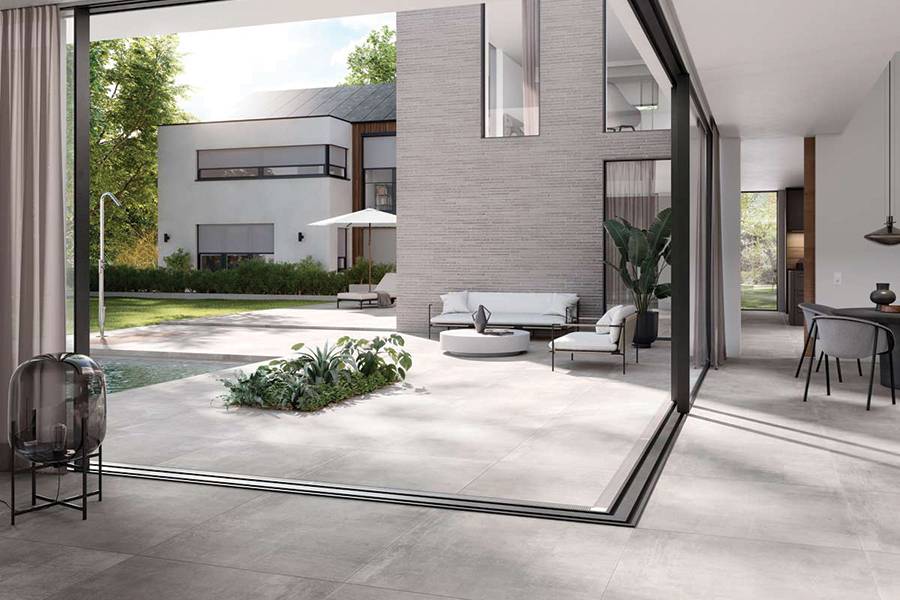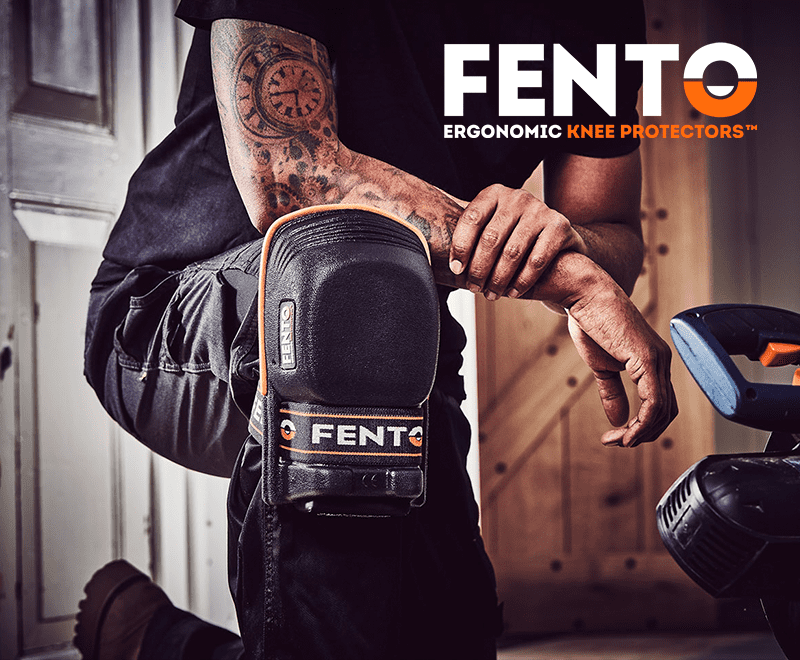While it may not be the first country that comes to mind when thinking about tile manufacturing, Germany competes admirably with Europe’s top ceramics centres in design, sustainability, and overall output. Although 2022 was a difficult year for the sector – as it was for many countries – German manufacturers remain optimistic about the role and impact of tiles in the future of construction.
The state of play
Earlier this year, German tile companies attended BAU, a trade show for architecture, materials and systems. According to BKF, the German ceramic tile association, sustainable construction was highlighted as a major theme at this year’s show. Conservation of resources as well as increased energy efficiency in all phases of construction were important topics of discussion between all of the show’s exhibitors and attendees. This was seen as a significant positive by the association, which sees this increasing focus on sustainability as the most powerful way for tiles to not only remain relevant, but communicate specific advantages over other construction materials.
Nonetheless, the last 12 months have seen their share of hardships. Despite the pandemic’s most obvious impacts fading, sick leave remained comparatively high due to relaxed requirements. More importantly, and echoing the sentiments of many other national tile associations, BKF points to the energy crisis as a crucial challenge for the German construction industry. Prices rose by many times their previous level, while at times it was unclear whether the necessary energy supply for production could be secured at all. Naturally, this led to production restrictions and cost increases throughout the industry, with the end result of a 5% fall in turnover for the building construction industry and a 3% drop for residential construction in 2022.
Of course, the tile market was also impacted. Production, sales, imports and exports were all reduced significantly in 2022 compared to previous years. Perhaps predictably, the downturn in exports corresponded largely with wider negative economic trends in Europe, with the nation’s exports to non-EU countries such as Switzerland and the USA increasing significantly. Owing to these conditions, manufacturers have had to increase prices across the board, with average jumps of around 20%.
Despite all of this, BKF says, there are a lot of reasons for German manufacturers to feel optimistic about the near future of their sector. For one thing, while price increases are painful, they have been felt across all of Europe (and not only in tiling or even construction more generally). In this context, customers have accepted their necessity, and are not now expecting a dramatic decrease in the cost of tiles any time soon.
Moreover, tile sales in Germany have been shifting in recent years from the new build to the renovation market. This means that while the overall construction sector is facing a slower recovery, this slump is not affecting German tile manufacturers as much. In fact, with their environmental qualities, and in particular their synergistic qualities with underfloor heating – soon to become even more relevant when oil and gas heating is banned in the nation from next year – tiles are a particularly attractive option for energy-efficient renovation.
Contemporary trends
According to Deutsche Fliese (“German Tile”) an initiative organised by BKF members to promote the nation’s ceramic output, 2023’s designs skew mostly towards authentic reproductions that combine natural or historical aesthetics with the modern technological benefits of porcelain. For example, stones such as travertine, basalt or slate are replicated in the ranges of many manufacturers, while some make use of the design freedom offered by digital printing to combine different grains, or produce colours not available in natural products. Coarse grains, which marry an authentically rough appearance with a homogenous, high-quality surface, are said to be particularly trendy.
The most popular stone recreation, however, is marble. These to technological developments enabling lively grains and irregular colour gradients, these tiles are a convincing alternative to true marble, while remaining completely abrasion-resistant and safe without any impregnation. Offered in both matt and polished finishes, these tiles are suitable for more modern, minimal interiors in the former style, while the latter lends itself to luxurious, opulent spaces.
Germany’s wood-effect tiles, on the other hand, are said to be so effective a recreation of their natural counterparts that consumers often mistake them for the real thing. Three-dimensional grains create realistic visual and tactile effects, particularly when combined with the traditional plank shape and wood laying patterns such as herringbone. The most popular wood-effect for the German market is classically oak, although 2023 has also seen interpretations of acacia and walnut, among others. Of course, in contrast to true wood flooring, wood-effect porcelain requires comparatively little maintenance and upkeep, and is a far better partner for underfloor heating.
Also popular in 2023 are historical patterned tiles which offer a “hand-finished” effect, particularly those which reference Moroccan tile designs. These designs can be utilised in both external and internal spaces, and much like wood-effect tiles, cement-effect porcelain requires little of the ongoing care its traditional counterparts demand. Here, manufacturers can be somewhat more adventurous in dimension, offering the popular hexagon format. Depending on their ultimate destination and design context, these tiles are offered in subtle, neutral tones, as well as bolder shades such as ochre yellow and terracotta red.
While these are the most popular styles, Deutsche Fliese also suggests the German market is characterised by a freedom that allows designers to personalise spaces to a high degree of specificity. A wide variety of designs, from bright jungle decor to rustic glaze effects, are on offer to provide the necessary components for any desired interior design. While there are many challenges ahead for German tile manufacturers, they seem determined – and more than likely – to remain a key part of the country’s construction ecosystem.








